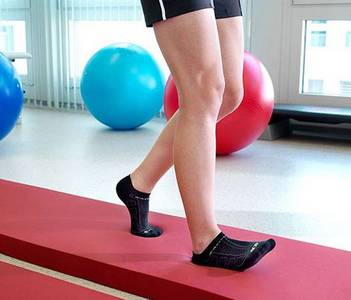Exercise your way to better health
Numerous studies show that there is a link between physical inactivity and poor health.
Survival rates for all illnesses related to the number of hours spent sitting
The research team at the Pennington Biomedical Research Center show in their study that long periods spent sitting have a very negative effect in terms of health. This long-term study involving more than 17,000 participants shows that sitting raises your risk of dying from cardiovascular disease and other illnesses. This was true even among physically active test subjects. This observation is important as it proves that long periods spent sitting passively cannot be countered by occasional sports activity.
It shows that in our modern society, moderate exercise is an extremely important factor for healthy living.
© MEDICINE AND SCIENCE IN SPORTS & EXERCISE, 2009
Exercise improves your health
Physiologists dealing with the causes of overweight, heart disease and diabetes have discovered that sitting shuts down the circulation of the fat-absorbing enzyme lipase. Standing upright, on the other hand, engages muscles and promotes the distribution of the enzyme. Lipase helps the body break down fats and cholesterol. Studies show that standing uses blood glucose and thus cuts your risk of diabetes.
“Chair time is an insidious hazard because people haven't been told it's a hazard”, explains Professor Marc Hamilton of the Pennington Biomedical Research Center.
Many people suffer from metabolic syndrome, which causes obesity, diabetes and heart disease. Biomedicine researchers believe that the reason metabolic syndrome is so common is that we sit too much.
Many studies show that rates of heart disease, diabetes and obesity are doubled or sometimes even tripled in people who sit a lot. According to Professor Hamilton, one reason for this is the enzyme lipase. This is only activated by physical activity, and fat is absorbed into the muscles. When you sit, it is inactive. “Instead, the fat will recirculate in the blood stream and go and be stored as body fat or it can clog arteries and cause diseases”, explains Professor Hamilton. A simple experiment makes this clear. Plasma was taken from a subject after eating. The first time, when the meal was eaten sitting down, the plasma sample was cloudy. The second time, when the same meal was eaten standing, the plasma was clear.
“If you can perform a behavior while sitting or standing, I would choose standing”, says Hamilton, who has swapped his desk chair for a treadmill. Not yet ready for that step? “You can have just as much fun watching your kids play if you're standing by the fence”, Hamilton advises. Or limit chair time by taking frequent breaks at work to stand and walk around. Or stand up while talking on the phone or watching television.
Standing also helps you lose weight. The average person burns an extra 60 calories an hour by standing. “Avoid the chair as much as you can”, advises Hamilton. Another advantage of standing is that it improves your good cholesterol levels. Sitting reduces your good cholesterol level by up to 22 per cent.
© American Institute of Physics series, 2008
Thanks to the kyBounder, sedentary jobs can easily be carried out actively, standing upright. The soft, supple, springy kyBounder mat easily fits into daily life: working at the computer, ironing or watching television.
The soft, supple structure of the kyBounder encourages the muscles in your feet and legs, especially, into constant, minute movements to maintain balance and posture. This produces a unique way of standing which targets the deep muscle layers, giving your intramuscular coordination and sensorimotor system exercise with no regime or extra time required.
Study confirms fewer sick days taken
A study run by Prof. Detlef Krüger at the Research Group into the Sociology of Work and Technological Design (FGAT GmbH) in Berlin uses a cost-benefit analysis to show how companies can benefit from high desks.
Long-term study (1997–2003) with unambiguous results: Of all the benefits
- 75% are increases in productivity due to increased job satisfaction
- 15% are savings by avoiding accidents at work (sick days taken as staff cannot work due to musculoskeletal system problems)
- 10% are the avoidance of costs due to employee turnover, and improved quality
This leads to
- greater job satisfaction and staff motivation
- benefit-cost ratio of about 10.0
Every euro invested gives a return on investment of about 10 euros.






